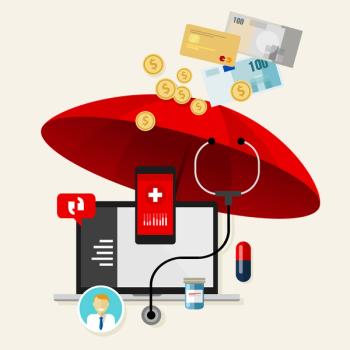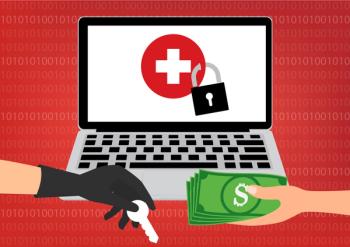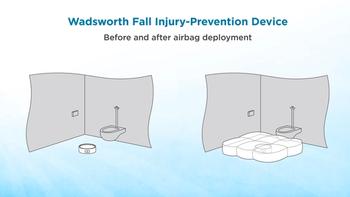
In the final part of a two-part video series, Wes Gilson, senior director MR of Business Development at Siemens Healthineers, advises how payers and health facilities can help improve patient access to MRI care, and shares some MRI alternatives.

In the final part of a two-part video series, Wes Gilson, senior director MR of Business Development at Siemens Healthineers, advises how payers and health facilities can help improve patient access to MRI care, and shares some MRI alternatives.

CDC figures from June 2020 show that about 41% of adults had opted to delay visiting a medical provider. Now, 20-plus months later, care avoidance of common chronic and acute conditions has only worsened.

Ideally, value-based and technology programs combine to produce better outcomes. But researchers at University of California, San Francisco, found little evidence of synergy in the meaningful use, patient-centered medical home and Medicare Shared Savings Program ACO program.

The new indication for reducing the risk of cardiovascular death and hospitalization for heart failure is expected to boost Jardiance’s sales further. Revenue for the drug jumped 38% in 2021 to reach nearly $432 million globally.

Colorectal cancer disparities between Black and white adults were eliminated among Kaiser Permanente members in Northern California after the healthcare organization instituted a regionwide, structured colorectal cancer screening program.

In this first part of a two-part video series, Wes Gilson, senior director MR of Business Development at Siemens Healthineers, addresses why improving access to magnetic resonance imaging (MRI) is crucial to advancing health equity, and what barriers are limiting that access to patients.

This guidance discusses that individuals 12 years and older can receive the second dose of the Pfizer-BioNTech vaccine 3-8 weeks after the first. Additionally, the interval for those 18 years and older for Moderna is 4-8 weeks.

A recent study found 70% of patients believe remote patient monitoring enables better care management.

In discussing company’s drug spend report, CVS Caremark President Alan Lotvin, M.D., bats away criticism of the pharmacy benefits management (PBM) industry, blames drugmakers for high drug prices, and says independent pharmacies are doing well because of participation in “humongous buying groups.”

Most Health plans and much of healthcare, overall, have had their feet on the gas when it comes to more patient-centered care or consumer choice services. COVID-19 has clearly made it all about the consumer in many ways, but more specifically, in making care much more accessible.

Sanofi and GSK today announce will try to get approval from the FDA and the European Medicines Agency (EMA) for their COVID-19 vaccine, entering a crowded market.

With the COVID-19 pandemic ongoing and alarming levels of healthcare workers still experiencing stress, burnout, and other negative feelings surrounding their work, it's time to return the favors they've given countless others.

During the state of the industry webinar, AHIP experts reviewed policies and solutions to improve affordable access to care and shape healthcare in the post-pandemic world.

EmsanaRx, a pharmacy benefit manager launched by the Purchaser Business Group on Health, started operations in January.

The FDA’s authorization would depend on ongoing studies establishing that a fourth dose would shore up people’s molecular defenses that waned after their first booster shot.

New report includes research findings on insulin biosimilars use among retail pharmacists and physicians.

The CDC released the first real world data February 15 in a Morbidity and Mortality Weekly Report (MMWR) that infants younger than 6 months were overall 61% less likely to be hospitalized from COVID-19 if their mothers were vaccinated during pregnancy through completion of a 2-dose primary mRNA COVID-19 vaccine series with either Pfizer-BioNTech (Comirnaty) or Moderna (Spikevax).

A look at the challenges hospitals face due to an insufficient supply chain—and how to address them.

A vast majority said they plan to continue using telemedicine even beyond the pandemic, according to a report from Doximity.

There have been an alarming increase of ransomware attacks on healthcare systems in 2021—with more than 65 reported ransomware attacks on healthcare organizations in the third quarter alone and two-thirds of organization reporting that they had been targeted by ransomware strikes—a trend that is likely to continue in 2022.


The healthcare affordability crisis is having a detrimental impact on overall financial wellbeing and behaviors. In a recent Centivo survey, nearly three in five (59%) respondents say they had to make financial sacrifices due to significant medical expenses over the past two years.

Asundexian is an oral factor XIa inhibitor currently under phase 2 trials for potential secondary thrombosis prevention in patients with non-cardioembolic ischemic stroke, atrial fibrillation, or recent myocardial infarction.

The Department of Health and Human Services, through the Health Resources and Services Administration, awarded nearly $55 million to 29 HRSA-funded health centers to increase healthcare access and quality for underserved populations through virtual care such as telehealth, remote patient monitoring, digital patient tools, and health information technology platforms.

The solution, available immediately to all large health plans, is meant to simplify care for patients with complex conditions.

Last year was a record setting year in worldwide merger and acquisition activity across multiple industries, and healthcare was a big part of that.

An analysis cites increases in bloodstream and urinary tract infections. Hospitals and skilled nursing facilities are seeing more problems.


Main Line Health in suburban Philadelphia has solicited ideas for inventions from nurses. Barbara Wadsworth, the healthcare system’s chief operating officer with 35 years experience as a nurse, has invented a device for cushioning patient falls in the bathroom.

Hiring assistants that work virtually and outsourcing medical coding are two ways that providers can navigate through these times of increasing cost pressures and staffing shortages.